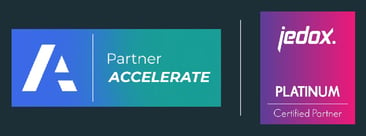Businesses should strive to become black belts at forecasting, constantly reviewing the processes they use and the technologies that can transform their capabilities. It’s that important!
If you are the Sales VP, CFO, or a CEO of a company with shareholders or outside investors, missing your numbers is one of the most disastrous things to get wrong, especially if it is announced out of the blue. Investors and analysts like certainty and expect year-end results to be broadly in line with the guidance they received. So a missed forecast could lead directly to your share price plummeting or an angry investor at the other end of the phone. It’s hardly career-enhancing!
Unfortunately, accurate forecasting is getting tougher by the day with disruptions, such as COVID-19 and the fallout from Brexit adding to the ever-present challenges of evolving technologies, increasingly volatile input costs, fickle consumer preferences, and upstart competitors. So which way do you turn?
Undoubtedly adopting rolling forecasting is the best way of improving forecast accuracy and delivering timely business insight. But currently, many forecasting processes are decidedly inefficient with teams in individual business units downloading data from disparate enterprise resource planning systems, manipulating it in spreadsheets, and emailing their output to stakeholders in other downstream departments. Such processes are inefficient, error-prone and are rarely at the right level of detail needed to drive accuracy. They also take up too much managerial time to become routine.
five building blocks of better forecasting
Regardless of your sector, there are some core building blocks in building better forecasting capabilities:
- First, enable rolling re-forecasting by building driver-based models that can be quickly and easily refreshed with transactional data. That way, new forecasts can be rapidly generated to help managers reach quick and timely decisions that will optimise financial performance in the short term.
- Forecast at the right level of detail. For instance, some elements of any revenue forecast are always more important than others, so it follows that some need to be forecast in considerable detail while others can simply be aggregated. For instance, you might re-forecast every pack size of fast-moving products by applying statistical modeling to current sales orders while doing a more aggregated forecast for slow-moving product groups and generating an SKU-level forecast for production, based on the mix of recent orders.
- Automate the process while allowing manual overrides, as that’s the only way you can manage the large amount of data involved in such a short time window. This may mean automating the forecasting of each base-level driver using the most appropriate statistical technique before allowing managers to review and amend the results based on their local knowledge. Or it could mean following the 80/20 rule by automating the forecast for the majority of customers. This can give managers time to concentrate on a small number of large accounts that generate most of the revenue.
- Build collaborative processes where the key people in all parts of the business can both share assumptions, and update their data in real-time, so they can realign their plans and capacity around changing levels of demand.
- Integrate forecasting with management practices so that new forecasts fit into existing cycles for sales or supply chain planning. That way, forecasts will be available when they are most needed and will help managers make better decisions.
Needless to say, you’re not going deliver these building blocks and achieve a step change in forecasting capabilities by persisting with spreadsheets or legacy tools. But, you can with other technologies.
Webinar: Forecast, Forecast, Forecast!
I recently presented the webinar ‘Forecast, Forecast, Forecast!’ Click here to view this on-demand for more on...
- How the modern FP&A functions are taking a more agile and flexible approach to planning and forecasting.
- The type of tools and processes that are needed to plan and forecast faster and more accurately.
- A client case study that illustrates the business impact and return on investment of transforming forecasting.
My colleague, Pawel demonstrates how a native cloud-based planning platform, such as Anaplan, enables organisations to transform their planning and forecasting processes so they can continuously adapt to change, while simultaneously reducing the amount of management time and the hidden costs of planning and forecasting.
Or simply get in touch today and we will happily show how Anaplan can work for your business.






